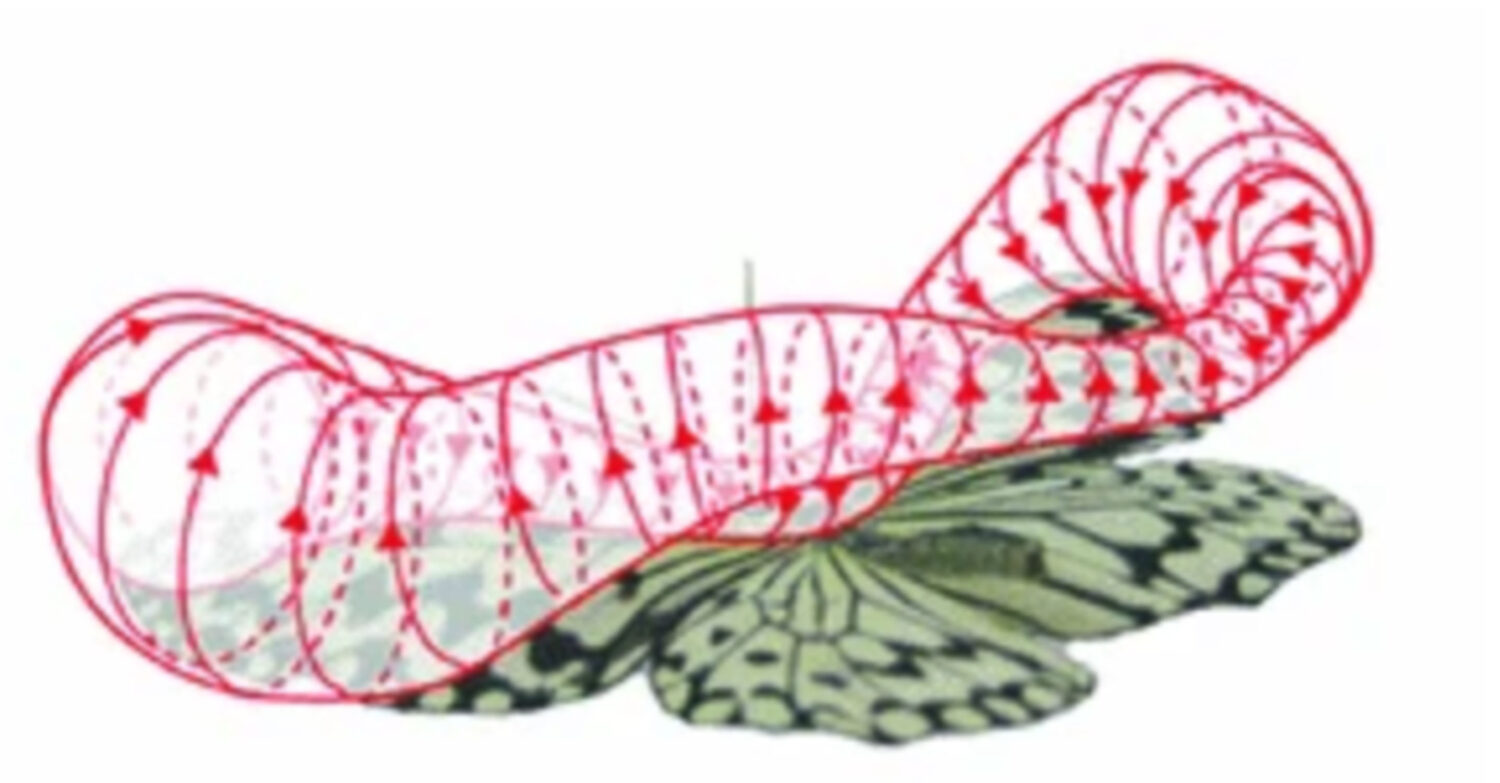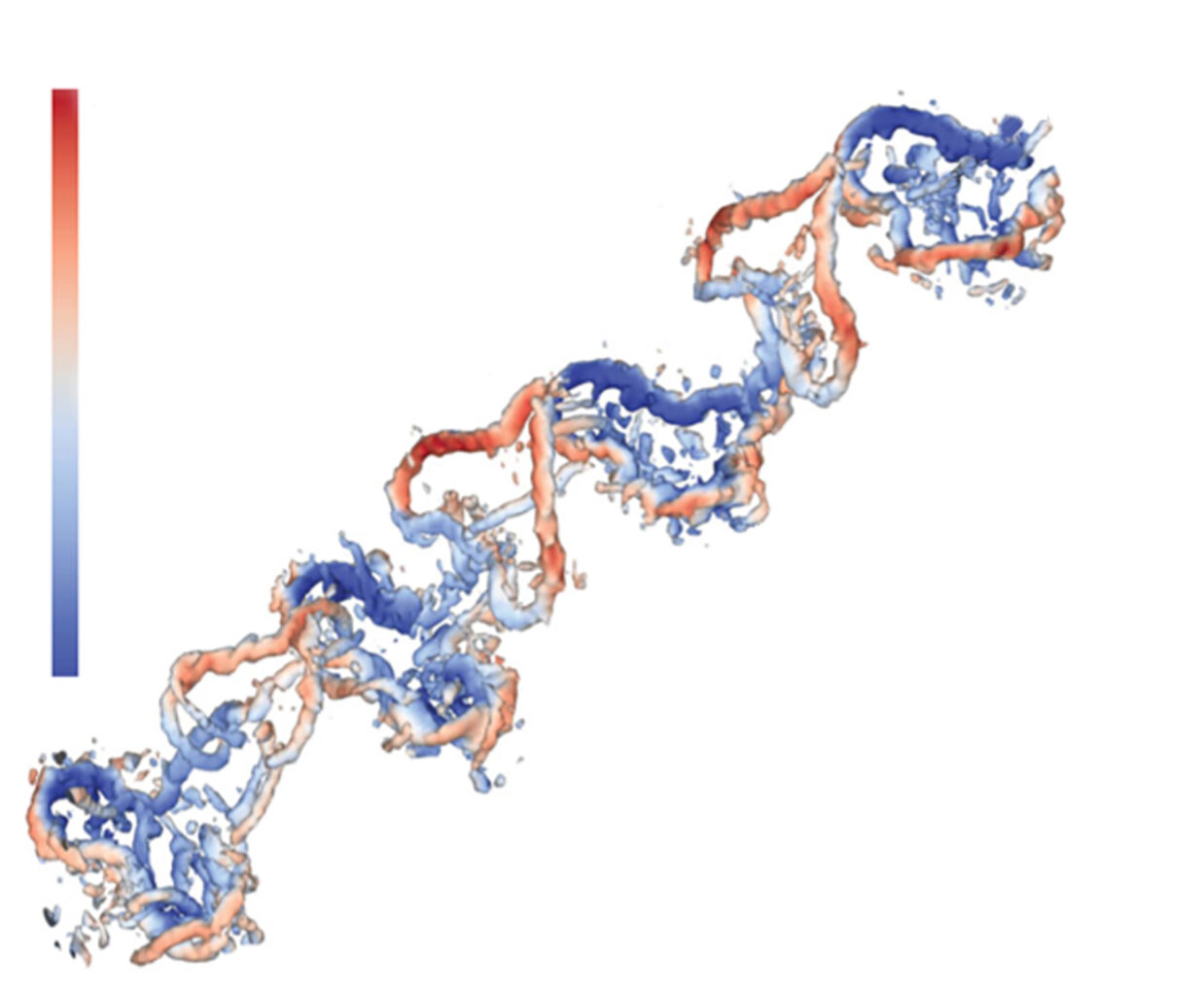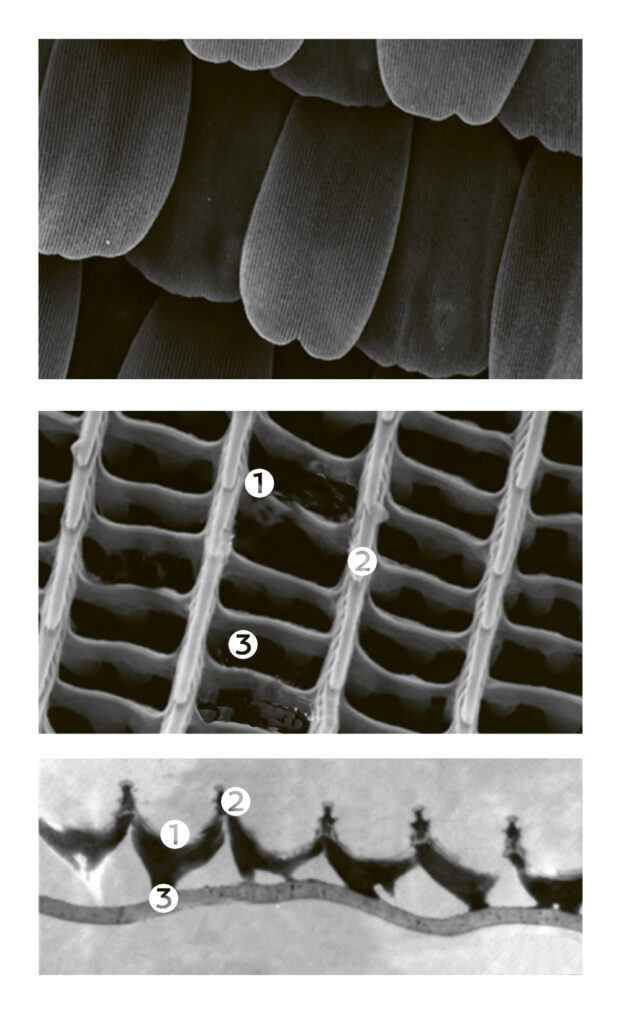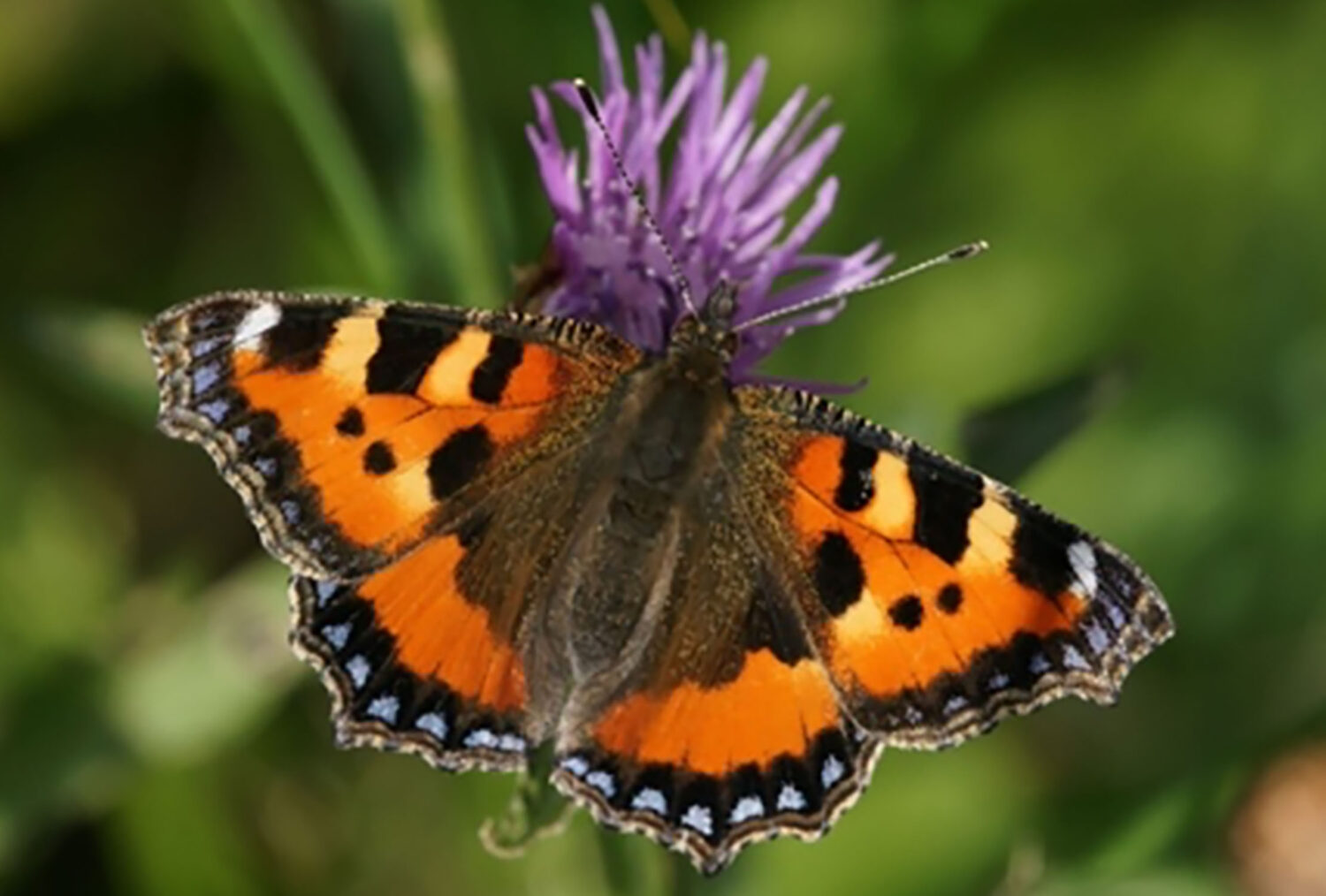Airplanes, which humanity dreamed of for so long, have become omnipresent – their traces shape the blue sky every day. Butterflies provide a glimpse into the next step – aviation technologies of the future.
Passengers flying over the clouds crisscrossed by the sun’s rays can find this experience magical. But aviation is one of the most polluting technologies – it is energy-intensive, and it is still hard to imagine how it could change to be less intensive for the Earth’s atmosphere. Will butterflies help to bring the solution?
Observing butterflies, beetles, and other insects has helped revolutionize our understanding of flying. Air vortices are essential: prospective aircraft pilots are still learning that their arch-enemy is the vortex: as long as the airflow follows the curved shape of the wing, lift (the force that keeps a body in the air and counteracts its weight) is guaranteed under normal circumstances. However, if a pilot rises too steeply or too slowly, the current detaches over the arched upper wing, a vortex forms, and the pilot loses control as the aircraft spins out of the sky.
Recently, researchers have increasingly studied the flight of small insects to understand and imitate them.1 Insects constantly create vortices when flying, and it is now clear that these vortices are essential for their flight – even for airplanes and birds, but that’s another story.

Aeronautics – Lemniscate Shape
The seemingly unpredictable, meandering movement of fluttering butterflies is not a random migration. Some monarch butterflies travel over 400 kilometers daily, while the Painted Lady covers a large part of the globe (over many generations). This extraordinary ability is the result of mastering various aerodynamic processes that generally vary from one wing beat to the next.2 We will mention some of them below. We are only gradually discovering how butterflies weave intricate swirl carpets upon which they fly: the image fairy tale image of being carried on a flying carpet contains hidden wisdom. It will be one of the main themes of this article.
The extreme zigzag movement of the butterflies is made possible by the interaction of the four wings. To be able to fly, butterflies would actually only need their forewings. With these alone, they could fly – and also in a zigzag. But to fly more agile and, above all, faster, its hind wings help the butterfly.
Some butterflies flutter, others sail barely audibly through the air, and still others buzz. In addition, there are many other flight variants – butterflies that do not move their wings up and down quite as quickly during flutter flight. When buzzing – the sounds of the wings becoming audible – it goes faster. You can barely see all this with the naked eye. Butterflies flap their wings about 10 to 15 times per second. Some even manage up to 80 wing beats per second. With their flight technique, some reach an average speed of 50 kilometers per hour. That’s as fast as cars are allowed to drive in the city. The fastest swarmers, such as the Convolvulus Hawk-moth, even reach 100 kilometers per hour. This makes butterflies one of the fastest insects in the world.
Now let’s get to the details of the new research. We have known for a long time that butterflies do not simply flap their wings up and down but move them in a subtle lemniscate shape. How does this come about, and what does it mean for the aerodynamics of these graceful beings? To better understand the research, it is essential to distinguish between two forces on which all butterflies – actually everything that flies – depend: lift and propulsion (thrust). The former force keeps the butterfly in the air and makes it rise to counteract gravity, while the latter carries it forward.

Addition: The sequences were recorded with two high-speed cameras and then
analyzed in detail.
Lift and Propulsion – Vortex Carpet
Butterflies weave their swirling carpets of movement out of the surrounding air.3 During the downward strike, the wings open and move downwards, creating a ring vortex (Figure 1). It is initially small, and its axis is close to the wing surface, but then it gradually moves away as the vertebra grows. The pressure on the underside and the suction force inherent in the vortex create lift.
What about propulsion? First, the scientists noticed4 how the relatively large wings and the wave movement of the thorax and abdomen rotated the tiny body from the horizontal to the vertical during the downward impact, bouncing back and forth. Although this initially appeared to be a waste of energy, they have confirmed that the butterfly wings’ downward stroke creates lift. In contrast, since the wings here are tilted forward rather than upwards, the upward stroke drives the insect forward in a previously unknown way. First of all – because of the new orientation of the wings – the animal “rows” forward (“thrust”, ring vortex sucks forward, accumulating air also pushes wings and body forward). And when the wings approach each other as they strike upwards, they clap together, simultaneously bending their flexible (and paired) wings (Fig. 2) and “pushing out” a jet of air behind them. The thrust vortex is washed away by the jet to the rear. When the wings are folded, their resistance to the body’s rotation back to the horizontal is minimal, after which the downward impact begins again.
Although we have discussed the lift and propulsion vortices separately, they never are: like a twine, they continuously weave the vortex carpet mentioned above from the movement of the air (Fig. 3). After all, it is the combination of the up and down movement of the wings on the one hand and the bobbing movement of the body on the other that leads to the Lemniscatatic movement of the wings.

Wings – Ballerina Pirouette
Contrary to popular belief that butterfly wings are mainly composed of lifeless membranes, we now know that they contain a complex network of living cells that serve to perceive light, heat (e.g., to control overheating), smell, and movement, and even include the so-called “wing heart”, an organ in the wing that beats endogenously at a rate of a few dozen times per minute and unidirectional hemolymph through the wing organs in leaf follicles pulls.5 In comparison, butterflies beat their wings 10 to 15 times per second – much faster than the beating of their wing heart. The wings thus combine sensation and locomotion – and the mediating rhythms of wing heart and wing beat – in a single organ.
Butterfly wings are by no means like rigid boards. The very flexible wings of certain sea butterflies somewhat resemble the swirling grace of a light robe when dancing. Only gradually do we realize how this dance improves flight, among other things, with the help of the so-called angular momentum effect – the “ballerina pirouette”.6

Fig. Fig. 4: Scales of the Little Fox (Aglais urticae), imaged by scanning electron microscopy. (b) The enlargement of a single scale (a) shows the ridges and ribs of the upper lamellae and the trabeculas that connect the upper and lower slats. (c) A side view of the same structure taken with the transmission electron microscope.
Microstructures – Born of Light and Air
Now let’s look at the microscopic structure of the butterfly wing, for example, the Small Tortoiseshell (Aglais urticae) (Fig. 4), to see how it plays with light and air.7 (Fig. 5) The colors of butterflies are based on two fundamentally different processes, which largely depend on the respective color. Most butterflies get their different shades of brown and yellow from melanin, the same pigment that makes us turn brown in the summer and gives some people freckles. Orange, yellow, and black are also generally due to dyes. However, when one sees the generally iridescent (luminous, intensely shifting) shades of blue, violet, or white, these are not found in any pigment on the body but are caused by the microstructures of the chitinous scales: a so-called structural color determined by the way light interferes with these tiny multi-layered structures.
However, the structure serves not only the coloring but also the way the air itself is pulled to the wing: such structured riblets, as they are called in the aerodynamic literature, keep the air close to the wing, thus contributing to performance and maneuverability: Up to this tiny scale, butterflies show, how they are born of light and air. According to legend, as a sign of her love, the Queen of Sheba gave King Solomon a flying carpet of green and gold studded with precious jewels. It is said that the flying carpet was woven on an ordinary loom, but its colors had spectacular powers.

Butterfly Flight – a New Age of Flight?
In conversation with workers during the construction of the First Goetheanum8 Rudolf Steiner began one of the discussions by stating that (among other things) birds had so far been our primary source of inspiration for the construction of aircraft. He then proposed an alternative source of inspiration, the butterfly. He claimed that aviation would “only come to its proper shape when you could touch the experiments for it on a large scale, especially with the butterfly flight.” The resounding success in most miniature aircraft is due to the studies of butterflies and other insects, which have recognized the formation of the complex magical vortex carpet described above. If we understand the magnification conditions better, are we perhaps at the beginning of a new age of flight?
This article is dedicated to Ernst-August Müller (†02/24/2001) and his students, the flow physicist Dietrich Rapp (†03/31/2017) and the aerodynamicist Frank Teichmann (†12/01/2006).
Translation: Monika Werner
Footnotes
- In the development of so-called MAVs (Micro Air Vehicles), such mini drones are used mainly due to the needs of the military and the surveillance industry.
- R. B. Srygley and A. L. R. Thomas, “Unconventional lift-generating mechanisms in free-flying butterflies,” Nature 420, 660 ff., 2002.
- M. Fuchiwaki, T. Kuroki, K. Tanaka, and T. Tababa, “Dynamic behavior of the vortex ring formed on a butterfly wing,” Exp Fluids 54 1450, 2013.
- L. C. Johansson and P. Henningsson, “Butterflies fly using efficient propulsive clap mechanism owing to flexible wings,” Journal of the Royal Society Interface 18 2020.0854, 2021.
- C.-C. Tsai, R. A. Childers, N. Nan Shi, C. Ren, J. N. Pelaez, G. D. Bernard, N. E. Pierce, and N. Yu, “Physical and behavioral adaptations to prevent overheating of the living wings of butterflies,” Nat Commun 11 551; 2020.
- F. Karakas, A. E. Maas, and D. W. Murphy, “A novel cylindrical overlap-and-fling mechanism used by sea butterflies,” Journal of Experimental Biology 223, 2020.
- P. Köchling, A. Niebel, K. Hurka, F. Vorholt, and H. Hölscher, “On the multifunctionality of butterfly scales: a scaling law for the ridges of cover scales,” Faraday Discussions 223 195–206, 2020.
- R. Steiner, Lecture in Dornach, Oct. 8, 1923, in: Human beings and the world. The work of the spirit in nature. Dornach 1999.









